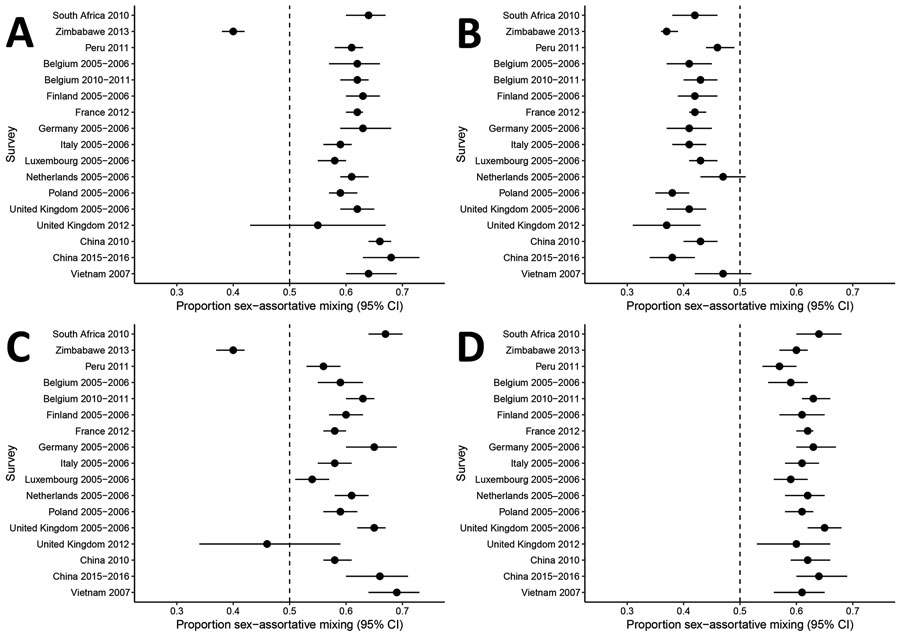Volume 26, Number 5—May 2020
Research
Systematic Review and Meta-Analysis of Sex Differences in Social Contact Patterns and Implications for Tuberculosis Transmission and Control
Figure 2

Figure 2. Analysis of sex differences in social contact patterns and tuberculosis transmission and control showing proportion of contacts with the same sex as reported for A) boys with boys, B) boys with men, C) girls with girls, and D) girls with women. Forest plots of sex-assortative mixing in contacts show contacts (black dots) and 95% CIs (error bars) reported by boys (A, B) and girls (C, D) with children (A, C) and with adults (B, D).
Page created: April 16, 2020
Page updated: April 16, 2020
Page reviewed: April 16, 2020
The conclusions, findings, and opinions expressed by authors contributing to this journal do not necessarily reflect the official position of the U.S. Department of Health and Human Services, the Public Health Service, the Centers for Disease Control and Prevention, or the authors' affiliated institutions. Use of trade names is for identification only and does not imply endorsement by any of the groups named above.